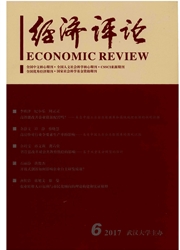

 中文摘要:
中文摘要:
本文运用世界187个国家和地区1950-2007年间的面板数据对政府规模与经济增长和发展之间的关系进行理论与实证分析。研究结果支持了"Armey曲线",即政府规模与经济增长之间存在一种倒U型关系,但拒绝了"瓦格纳法则",即经济发展水平的提高会降低政府规模。其背后的逻辑可以用政府和市场之间的替代关系来解释。由于政府只能有限替代市场,适度的政府规模有助于建立产权保护制度,弥补市场失灵,增进社会需求,促进经济增长,否则会挤出私人投资,导致社会寻租,从而损害经济增长。经济发展水平的提高会降低政府规模是因为日益健全的市场体系促使部分政府职能被专业化的市场组织所取代。
 英文摘要:
英文摘要:
This Paper utilize 187 countries' world panel data(i.e.Penn World Table,see Heston,Summers and Aten,2009) available from 1950 to 2007 to inquire the relationships between government size and economic development.The results support the "Armey curve",i.e.there is a U-shape relationship between government size and economic growth.But the result disagree with "Wagner Law",showing that economic development decreases government size.The logic can be explained by the substitution relationship between the government and the market.Because the government can only substitute market to some extent,an appropriate government size is helpful for protecting property rights,reducing market failure and expanding social demand to promote economic growth,or it would squeeze out private investment,resulting in rent seeking and damages economic growth.The reason that economic development decreases government size is that a part of government functions are substituted by professional market organizations due to the increasingly improved market system.
 同期刊论文项目
同期刊论文项目
 同项目期刊论文
同项目期刊论文
 期刊信息
期刊信息
